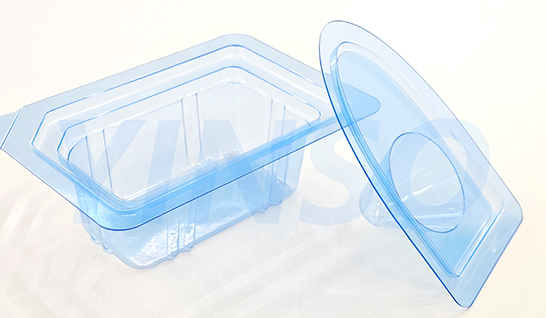Welcome to Dongguan Yinso Medical Packaging Co.,Ltd.
Welcome to Dongguan Yinso Medical Packaging Co.,Ltd.


Medical blister packaging serves as both a sterile barrier system and a life barrier. It is crucial in aspects such as the selection of packaging materials, structural design, mold selection, process molding, environmental control, quality monitoring, and packaging validation. Below, Yinso Packing offers some suggestions from different dimensions:
Material Selection
The choice of raw materials is the foundation for ensuring quality. From particles to finished blister packaging, the requirements are far higher than those for food-grade and industrial-grade products. Materials for medical-grade blister packaging must meet ROHS requirements and comply with ISO 10993 "Biological Evaluation of Medical Devices" and ISO 11607 "Packaging for Terminally Sterilized Medical Devices" to achieve a complete sterile barrier system and microbial barrier function. Currently, China produces a wide variety of food packaging materials with varying quality, posing many safety hazards. Especially when industrial PVC replaces PETG and RPET replaces APET, after high-temperature molding and sterilization, a large amount of harmful substances may be released, including carcinogens. This turns medical devices intended to save lives into harmful tools. Therefore, we must be cautious in selecting materials. Currently, the main medical-grade PETGs are Eastman 6763 and SK S2008.
Structural Design
Before design and development, comprehensive factors such as material selection, the medical devices being packaged, sterilization methods, and clean opening by medical staff should be fully considered. It is also necessary to ensure the ability of sterile medical device packaging to maintain sterility within its validity period. Therefore, details such as the design of sealing edge width, tear positions, and latching methods need to be considered during the design stage.
Mold Material Selection
Medical blister packaging uses aluminum alloy molds. Aluminum comes in many types, but 6061 is a better aluminum material in terms of overall mold processing accuracy and performance. Yinso Packing's blister packaging molds all use 6061 aluminum. However, many blister packaging molds on the market vary in quality, with significant price differences. Some use plaster powder to make the master mold with an outer plated layer of copper. Needless to say, the precision and appearance of the finished product are compromised, and the cleanliness cannot meet the requirements of medical device packaging. The quality of the mold for blister packaging directly affects the finished details of the blister packaging. Therefore, it is recommended to choose carefully.
Risks Posed by the Production Environment
Medical-grade blister packaging needs to be produced in a clean room of no less than Class 100,000 and managed in coexistence with the ISO 13485:2016 system. There are very high requirements for the cleanliness level of blister packaging. (For example, the initial contaminant microorganisms and insoluble particles in medical blister packaging need to be controlled within certain levels), especially for the packaging of Class III medical devices. However, the production environments of most blister packaging manufacturers fall far short of these requirements, not even guaranteeing a Class 300,000 environment, posing significant risks.
Molding Equipment
A customer once asked about the difference between a positive-negative pressure integrated molding machine and a negative pressure molding machine. Generally speaking, experienced manufacturers know that positive-negative pressure machines are mostly used in the food packaging industry due to their high production volume, simple structure, and efficiency requirements. Although some food tray products may feel hard when touched, their impact resistance is relatively poor and they are prone to stress deformation. A greater risk is that due to its pursuit of efficiency, although the punching and cutting section has a heated knife, it still cannot avoid cutting edge fuzz. Moreover, solutes during the molding process and dust generated when the chain pierces the material may directly fall into the shell, causing poor appearance. Furthermore, because it is automatically stacked after production, it is easy to cause scratches. These defects are difficult to detect through light inspection tables. If the automatically stacked products are disassembled for full inspection, it is easy to cause secondary scratches affecting quality. As we all know, the characteristics of medical device packaging are many varieties, small quantities, but extremely high requirements, emphasizing detail control and risk prevention. Negative pressure molding machines are highly flexible, and it is very convenient to load and unload molds. The key is that personnel monitoring during the process can reduce many defects. Therefore, there are still significant differences between its molding conditions and those of food packaging.
Packaging Validation
As mentioned above, there are strict regulatory requirements for performance tests such as the biocompatibility, physicochemical properties, sterilization adaptability of raw materials, heat-sealing performance with lid materials, and transportation methods. A comprehensive medical packaging validation plan should include but is not limited to:
1.Bacterial barrier test
2.Toxicological testing
3.Peel strength test
4.Leak test
5.Initial contamination microorganism and particle detection
6.Aging test
7.Sterilization residue and sterility test
8.Stacking and transportation simulation test
9.Choosing a medical packaging manufacturer that meets requirements requires comprehensive consideration of multiple aspects. Decisions should not be made solely based on price factors.
info@yinsopack.com
+86 15014837000(Wechat/WhatsApp/Skype)
NO.59 Meilin Road, Dalingshan Town, Dongguan City,Guangdong Province, China
Get a Free Prototype + Compliance Report Within 5 Days

Yinso Packing has been a leading figure in the medical packaging industry since 2007. We are committed to providing reliable, cost - effective, and innovative rigid thermoformed packaging solutions to top medical companies.
© 2025 Dongguan Yinso Medical Packaging Co.,Ltd All Rights Reserved.
AddressNO.59 Meilin Road, Dalingshan Town, Dongguan City,Guangdong Province, China
Emailinfo@yinsopack.com
Tel(Wechat/WhatsApp/Skype)+86 15014837000
About Us Medical Blister Packs Products Capabilities Blogs Contact Us